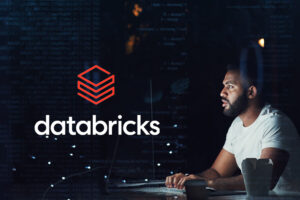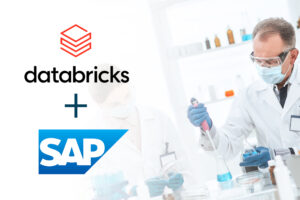Navigating the Clouds: A Comprehensive Look at Cloud Computing
Table of Contents
Understanding Cloud Computing
At its core, cloud computing is the delivery of computing services—including servers, storage, databases, networking, software, analytics, and intelligence—over the internet, or “the cloud”. Although it seems contemporary, this concept has roots dating back to the 1960s. Over the decades, it has evolved, with significant contributions from many individuals and organizations, leading to the sophisticated cloud services we see today. This evolution has been driven by the need for more efficient, scalable, and cost-effective ways of computing.
Types of Cloud Services
Cloud services are typically categorized into three service models:
Infrastructure as a Service (IaaS)
This model provides the basic infrastructure of virtual machines and other resources. It’s like renting a house – you have control over what’s inside, but the landlord takes care of the maintenance. This model gives businesses a lot of flexibility and control over their IT resources without investing in physical hardware.
Platform as a Service (PaaS)
PaaS adds a layer of additional services to IaaS, including operating systems and development tools. It’s like renting a furnished house – you get the infrastructure and additional amenities. This model is particularly popular with developers, providing a platform to build and deploy applications without worrying about the underlying infrastructure.
Software as a Service (SaaS)
SaaS delivers fully functional applications over the Internet. Think of it like a subscription to a streaming service – you don’t have to worry about how the service is provided, you just enjoy the content. Businesses use SaaS for applications like email, customer relationship management, and collaboration tools.
These services can be delivered via public clouds, accessible over the internet; private clouds, exclusive to a single organization; or hybrid clouds, a combination of both. Each model offers different levels of control and responsibility, and the best choice depends on a business’s specific needs and resources.
Key Concepts in Cloud Computing
In the realm of cloud computing, several terms are commonly used. Here’s a brief glossary:
Virtual Machine (VM)
A software emulation of a physical computer, running an operating system and applications just like a physical computer.
Workload
Any computational task or service that runs in the cloud.
Scalability
The ability to quickly adjust IT resources based on demand.
Cloud Migration
The process of moving data and applications to the cloud.
Serverless Computing
A cloud computing model where the cloud provider manages the infrastructure required to run code.
Multi-cloud
The use of multiple cloud computing services from different providers in a single network architecture.
Benefits of Cloud Computing
In the realm of cloud computing, several terms are commonly used. Here’s a brief glossary:
Scalability
One of the biggest advantages of cloud computing is its scalability. Need more storage or processing power? No problem. You can scale up your resources with a few clicks to meet your needs. When you no longer need them, you can scale back down. With on-premises computing, you’d need to physically install new hardware, which can be time-consuming and costly.
Cost
Cloud Computing can often be more cost-effective than on-premises computing. With the cloud, you typically pay for what you use, much like a utility. This can be especially beneficial for businesses with fluctuating needs. Plus, you don’t have to worry about the upfront costs of buying and maintaining hardware.
Accessibility
With cloud computing, you can access your data and applications from anywhere with an internet connection. This can be a game-changer for businesses with remote workers or multiple locations.
Disaster recovery
Cloud providers typically have robust disaster recovery measures in place. This means that your data is safe and can be quickly restored if something goes wrong, like a power outage or a natural disaster.
Automatic updates
Cloud providers regularly update their systems with the latest security patches and software updates. This can save you a lot of time and effort compared to maintaining an on-premises system.
Now, it’s important to note that while cloud computing has many advantages, it’s not a one-size-fits-all solution. Some businesses may have specific needs or regulatory requirements that make on-premises computing a better fit.
Challenges and Considerations in Cloud Computing
Despite its benefits, cloud computing presents particular challenges. Data security and privacy are paramount concerns, necessitating robust security measures. Cost management can be complex, requiring careful planning and monitoring.
The rapidly evolving field also demands continuous learning and staying abreast of the latest developments. Understanding the implications of regulatory compliance in the cloud is crucial, especially for businesses in highly regulated industries. Vendor lock-in is another concern, as moving services between different cloud providers can be complex and costly.
The Future of Cloud Computing
As we look to the future, cloud computing is set to continue its growth trajectory. Emerging technologies like artificial intelligence, machine learning, and the Internet of Things (IoT) are increasingly being integrated with cloud services, opening up new possibilities for innovation. Edge computing, which brings computation and data storage closer to the location where it’s needed, is another trend to watch, as it can improve response times and save bandwidth.
Conclusion
In conclusion, cloud computing, with its myriad of services and flexible models, has become an indispensable part of today’s digital landscape. Its benefits of scalability, cost-efficiency, and accessibility are driving businesses to embrace the cloud. However, it’s crucial to navigate its challenges wisely and stay updated in this fast-paced field. As we continue to explore and innovate, the sky’s the limit for what we can achieve with cloud computing. The journey into the cloud may seem daunting, but with the proper knowledge and tools, it’s a journey well worth taking.
So, as we navigate the clouds together, what are your thoughts on the future of cloud computing? How do you see it evolving, and what role do you see for yourself in this exciting field? After all, it’s through these discussions that we truly learn, isn’t it?
Glossary
A glossary of cloud computing terms. Now, that’s a handy tool for anyone venturing into the world of the cloud!
Cloud Computing: The delivery of computing services over the internet, including servers, storage, databases, networking, software, analytics, and intelligence.
Public Cloud: Cloud services offered over the internet by third-party providers. Services can be free or sold on-demand, allowing customers to pay only for the resources they use.
Private Cloud: Cloud services that are used exclusively by a single business or organization. They can be physically located at the organization’s on-site data center or hosted by a third-party service provider.
Hybrid Cloud: A combination of public and private clouds, bound together by technology that allows data and applications to be shared between them.
Infrastructure as a Service (IaaS): A cloud computing model where businesses rent IT infrastructure, such as servers, storage, and networks, from a cloud provider on a pay-as-you-go basis.
Platform as a Service (PaaS): A cloud computing model where businesses rent not just infrastructure, but also platforms that include operating systems, development tools, database management, business intelligence services, and more.
Software as a Service (SaaS): A cloud computing model where businesses use applications over the internet on a subscription basis.
Virtual Machine (VM): A software emulation of a physical computer, running an operating system and applications just like a physical computer.
Workload: In cloud computing, a workload refers to any computational task or service that runs in the cloud.
Scalability: The ability to quickly increase or decrease IT resources as needed.
Cloud Migration: The process of moving data, applications, and other business elements from an organization’s on-premises computers to the cloud, or from one cloud environment to another.
Cloud-Native: Refers to applications or services that are built to live in the cloud, taking full advantage of the benefits of cloud computing.
Serverless Computing: A cloud computing model where the cloud provider automatically manages the infrastructure required to run code so that developers can focus on their applications rather than managing servers.
Multi-cloud: The use of multiple cloud computing services from different providers in a single network architecture.
Cloud Storage: A service where data is remotely maintained, managed, and backed up, allowing users to store files online and access them from any location via the internet.
Learn more about our services!
Or contact us directly! Ask away!
And we will have the perfect role for out-of-the-box thinking developers ready to change the game and enhance your business to new heights.



